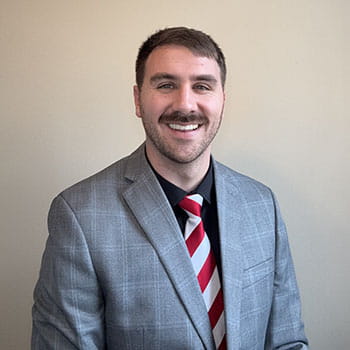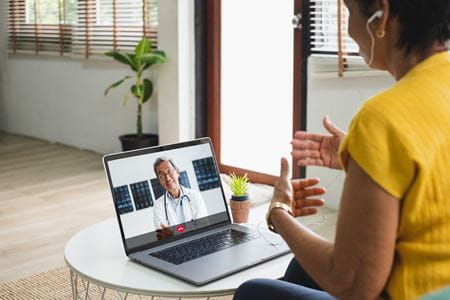Feelings among rural Hoosiers toward telehealth medicine are more complex than previously thought, according to a study conducted by a team of Indiana University School of Medicine students and faculty.
The study, recently published in BMC Health Services Research, surveyed 253 people in Martin County, Indiana. It found that access to broadband internet was not as large of a barrier to telehealth services as once believed, as well as a significant interest in remote primary care visits over industry-pushed specialty care services.
"Telehealth could solve some of the health care shortages in rural communities," said Chase Salmon, a fourth-year medical student at the IU School of Medicine's Terre Haute campus and the lead author of the study. "As people get more comfortable with the technology, particularly for primary care visits, it could relieve some of the burden on the health care systems in these areas."
The study found just 5% of respondents used telehealth prior to the COVID-19 pandemic. Use jumped to 42% during the pandemic and has dropped to about 22% now. About 60% of those surveyed said they would consider a telehealth appointment.
Further surveying is needed to explain the disconnect between 60% interest and only 22% actual use, the study notes.
Telehealth was most commonly used for primary care visits, even though specialty care is much harder to access in rural areas.
Respondents cited a preference for in-person visits and views that telehealth medicine provides worse care as reasons for not using it. The study also noted a lack of providers may inhibit telehealth use.

Chase Salmon | Photo courtesy of Chase Salmon
"Rural communities are understudied," Salmon said. "There are less scientifically minded people stationed in rural areas. Instead of proposing what the barriers to telehealth might be, we wanted to meet people where they were at."
Salmon sought to study rural areas of Indiana like Martin County, where he was born and raised. The project began as an assignment for IU School of Medicine's Rural Medical Education Program.
"The coolest part is going back to my home community and giving them a voice," Salmon said.
The survey was circulated among the community through a newspaper ad and social media posts.
Fellow medical student Kameron Bell and IU School of Medicine faculty members Eric Reyes, PhD; Ellen Ireland, PhD, MPH; and Robin Danek, PhD, MPH, joined Salmon as co-authors.
Taihung Duong, PhD, director of IU School of Medicine’s Terre Haute campus and a professor of anatomy, cell biology and physiology, called the team's work "a commendable effort to advance the discourse on rural health care equity."
"The authors' work not only sheds light on the current state of telemedicine in rural communities but also provides a foundation for future research and policy initiatives aimed at reducing health care disparities," Duong said. "Their findings are a testament to the potential of telemedicine to improve access to care, while also highlighting the need for continued innovation and investment in rural health care infrastructure."
